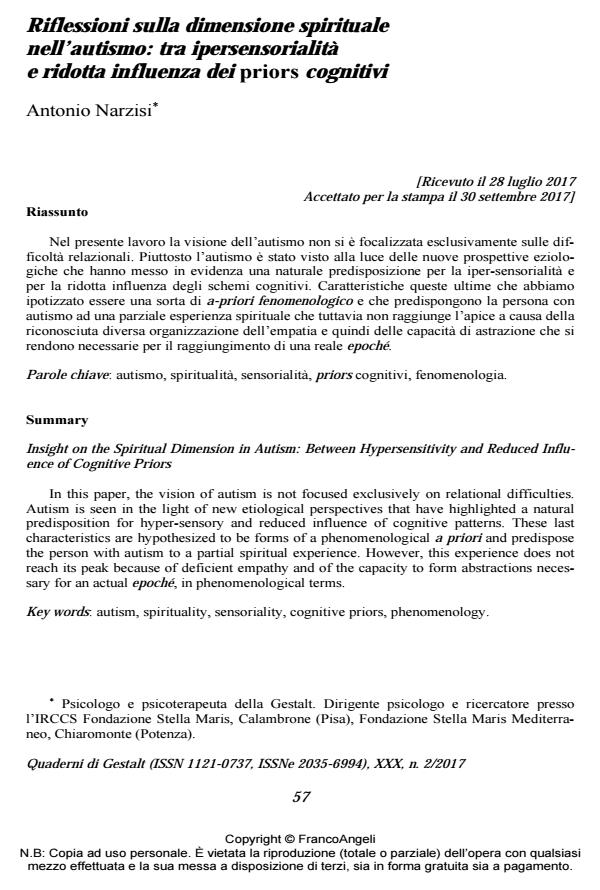Insight on the Spiritual Dimension in Autism: Between Hypersensitivity and Reduced Influ-ence of Cognitive Priors
Journal title QUADERNI DI GESTALT
Author/s Antonio Narzisi
Publishing Year 2018 Issue 2017/2
Language Italian Pages 9 P. 57-65 File size 164 KB
DOI 10.3280/GEST2017-002004
DOI is like a bar code for intellectual property: to have more infomation
click here
Below, you can see the article first page
If you want to buy this article in PDF format, you can do it, following the instructions to buy download credits

FrancoAngeli is member of Publishers International Linking Association, Inc (PILA), a not-for-profit association which run the CrossRef service enabling links to and from online scholarly content.
In this paper, the vision of autism is not focused exclusively on relational difficulties. Autism is seen in the light of new etiological perspectives that have highlighted a natural predisposition for hyper-sensory and reduced influence of cognitive patterns. These last characteristics are hypothesized to be forms of a phenomenological a priori and predispose the person with autism to a partial spiritual experience. However, this experience does not reach its peak because of deficient empathy and of the capacity to form abstractions necessary for an actual epoché, in phenomenological terms.
Keywords: Autism, spirituality, sensoriality, cognitive priors, phenomenology.
Antonio Narzisi, Riflessioni sulla dimensione spirituale nell’autismo: tra ipersensorialità e ridotta influenza dei priors cognitivi in "QUADERNI DI GESTALT" 2/2017, pp 57-65, DOI: 10.3280/GEST2017-002004